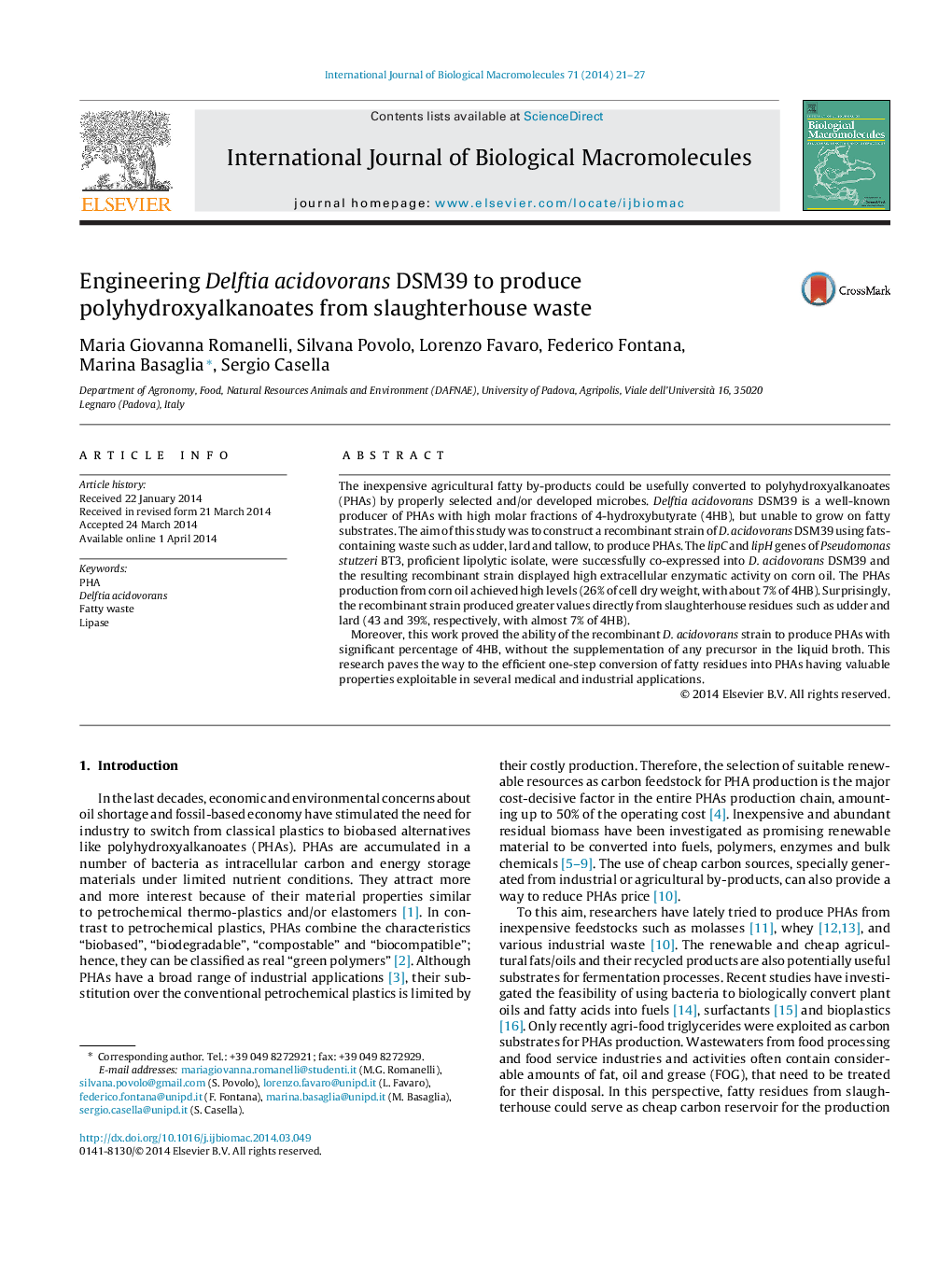| کد مقاله | کد نشریه | سال انتشار | مقاله انگلیسی | نسخه تمام متن |
|---|---|---|---|---|
| 1986441 | 1540249 | 2014 | 7 صفحه PDF | دانلود رایگان |

The inexpensive agricultural fatty by-products could be usefully converted to polyhydroxyalkanoates (PHAs) by properly selected and/or developed microbes. Delftia acidovorans DSM39 is a well-known producer of PHAs with high molar fractions of 4-hydroxybutyrate (4HB), but unable to grow on fatty substrates. The aim of this study was to construct a recombinant strain of D. acidovorans DSM39 using fats-containing waste such as udder, lard and tallow, to produce PHAs. The lipC and lipH genes of Pseudomonas stutzeri BT3, proficient lipolytic isolate, were successfully co-expressed into D. acidovorans DSM39 and the resulting recombinant strain displayed high extracellular enzymatic activity on corn oil. The PHAs production from corn oil achieved high levels (26% of cell dry weight, with about 7% of 4HB). Surprisingly, the recombinant strain produced greater values directly from slaughterhouse residues such as udder and lard (43 and 39%, respectively, with almost 7% of 4HB).Moreover, this work proved the ability of the recombinant D. acidovorans strain to produce PHAs with significant percentage of 4HB, without the supplementation of any precursor in the liquid broth. This research paves the way to the efficient one-step conversion of fatty residues into PHAs having valuable properties exploitable in several medical and industrial applications.
Journal: International Journal of Biological Macromolecules - Volume 71, November 2014, Pages 21–27